Smile Before Death, The Killer Reserved Nine Seats, The Weapon the Hour the Motive (1972, 1974)
Directed by: Francesco Mazzei, Giuseppe Bennati, Silvio Amadio
Written by: Biagio Proietti, Bruno Di Geronimo, Francesco Di Dio, Francesco Mazzei, Francesco Merli, Giuseppe Bennati, Marcello Aliprandi, Mario Bianchi, Paolo Levi, Silvio Amadio, Vinicio Marinucc
Starring: Bedy Moratti, Chris Avram, Jenny Tamburi, Renzo Montagnani, Rosalba Neri, Rosanna Schiaffino
GIALLO ESSENTIALS – BLACK EDITION
AVAILABLE ON BLU-RAY: 1ST AUGUST
For their previous two giallo threesomes, one of which is reviewed here, Arrow Video packaged together previous discs. However, for this one, they’ve treated us to three examples of the genre previously unreleased in the UK and the USA. So it’s now time for the Doc to delve once more into the crazy world of the giallo.

DISC ONE
SMILE BEFORE DEATH [1972]
AKA IL SORRISO DELLA IENA, SMILE OF THE HYENA
RUNNING TIME: 88 mins
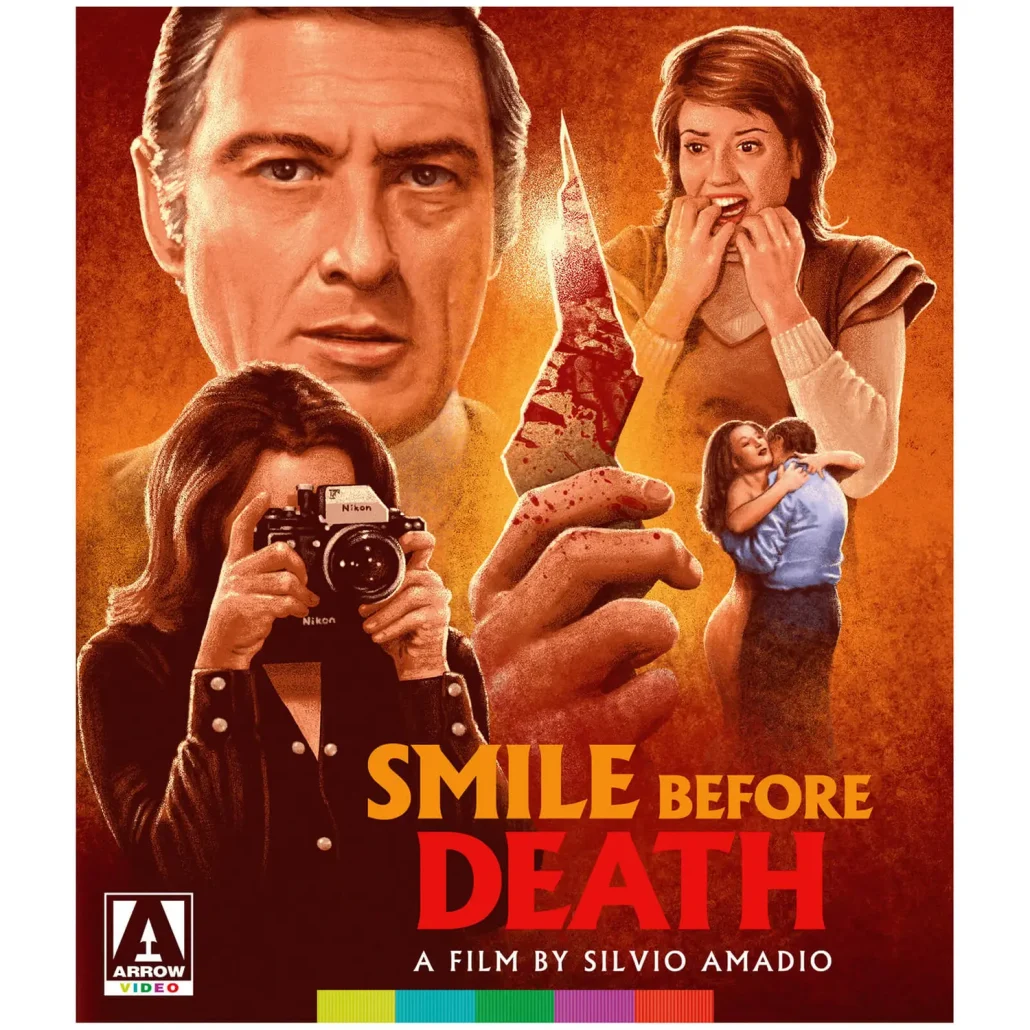
Dorothy Emerson is found dead with her throat cut by a shard of glass. Seeing as the room was locked from the inside, the police think it’s suicide, but Magda the housekeeper suspects foul play. Dorothy’s husband Marco was having an affair with her friend Gianna, and she’s now able to live at Dorothy’s villa with him, but then Dorothy’s daughter Nancy shows up. She’s lived in a boarding school for many years, but now, at twenty, the house belongs to her. When falling into the sea on a boat, Marco is oddly reluctant to save Nancy. It’s possible that Marco and Gianni may want harm to come to her, but it’s also possible that both Marco and Nancy may have trouble resisting her charms…
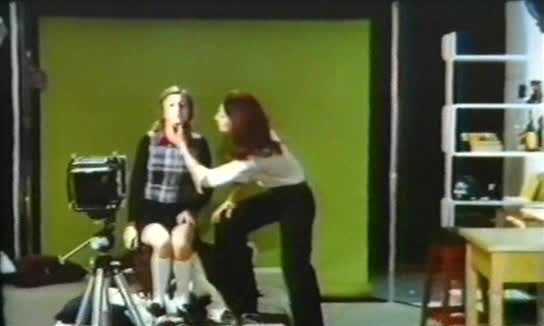
Only one of the films in the previous set was an archetypal giallo, but then our friends at Arrow Video are clearly fans of the genre and therefore seem to be on a mission to prove that the form was considerably more diverse than many of us may think. Smile Before Death has many traditional giallo elements, though many may still be surprised by its small cast of characters, the fact that most of it is set in just one house, and its seeming greater interest in mind games than violence. A sort of companion piece to director Silvio Amadio’s previous and much more famous Amuck! in that it tells a similar story but with notable tweaks, it rather resembles one of those twisty suspensers that Hammer sometimes made, usually written by Jimmy Sangster, though those usually tried to be genuinely frightening at times; this film certainly slowly builds simmering tension in a fairly adept and [at least for a giallo] often subtle way, but prefers to show off its leading lady’s boobs and tease the viewer with both a straight and a gay “will they, won’t they?”, not to mention presenting a heroine who we just can’t get a grip on. Why does she act they way that she does? What’s her agenda? The first half is very good at suggesting here and there that things aren’t just not as they seem but are probably different to how we might be piecing things together, while the third act piles on the surprises yet the plot does just about make a reasonable amount of sense apart from it not really requiring Nancy to do everything that she did. However, there’s one thing I should warn you about already. “Tu Tu Tu Tu Tiki Tiki Tu Tu”. You will not be able to get that out of your head. Confused? You soon won’t be.
An opening shot of a woman falling down with her throat cut grabs our attention immediately, the next shot also showing her death throes in a mirror. Black and white shots from the crime scene are shown as we hear that the verdict is suicide. The case is then closed, and it won’t be reopened for the duration of the film, due to the curious absence – at least for a giallo – of the police or an investigating detective. One could have easily been written in, but the story probably benefits from there not being one. The titles take place over shots from inside a car of various Rome landmarks, set to – yes – a theme tune composed – no, not by Ennio Morricone despite employing the same chord structure he often did around this time – but by Roberto Pregadio with vocals from the one and only Edda Della Orso, who has to repeat, “Tu Tu Tu Tu Tiki Tiki Tu Tu” and laugh hysterically over and over again. This is then reprised every five minutes [or so it seems], often in variations. As I type, I can’t get the darn thing out of my head. I will go to sleep hearing it. I will probably wake up hearing it. I might even dream it. The car being driven of course belongs to young and initially rather innocent-seeming Nancy, turning up unannounced at this villa once owned by her mum who she says she doesn’t even remember very well. Gianna, perhaps surprisingly for a movie stepmother, welcomes Nancy who is soon getting her to try on her mother’s clothes while she watches and even helps, though when she goes to get some photographs of Dorothy they’ve disappeared, and housekeeper Magda is seen looking at a newspaper cutting. Like most film housekeepers, she clearly knows more than she lets on right now, and almost goes to tell Nancy some stuff, via POV shots of stairs and a door handle being slowly turned in typical sinister fashion, but then chickens out. You know that instead she’ll reveal things when the plot conveniently demands it.
Gianna likes to photograph people, especially with statues, so Nancy asks her to take snaps of her, leading to a montage that seems like it’s never going to end. Nancy also frequently forgets to wear a top or a bra as she moves about the house. “I never would have imagined my stepdaughter running around blatantly posing in the nude” says Marco, though he clearly likes the sight more and more, and I don’t blame him. Nancy seems to be making slight sexual overtones to both of them, while Gianna looks with serious disapproval at Nancy and Marco together; is it because she’s jealous, or that she actually wants Nancy dead in case she finds out something that she doesn’t want her to find out? A flashback around a third of the way through suggests who may have killed Nancy’s mother, and another one a bit later makes it very clear. We’re possibly disappointed because it’s too obvious, we might have wished for a far more surprising revelation. However, they are to come, and until then there is certainly some suspense, even if a considerable amount of the running time is taken up by montages of Nancy with either stepdad or stepmum posing, eating dinner, going for a boat ride. The thing certainly seems a bit padded, though screenwriters Francesco Orazio Di Dio and Francesco Villa, working from a story by Francesco Merli and Amadio himself, probably thought that we have to get a sense of these characters spending a lot of time together for later parts of the tale to work. At least we don’t get people hopping into bed with each other at the drop of a hat as in some gialli, though one of the pairings still doesn’t entirely convince in terms of the seeming nature of one of the characters. Nonetheless some surprise revelations really are surprise revelations, and it turns out that hardly anybody in the story is “good”. I doubt that this is ruining things, by the way. The final scenes could have ramped up the excitement a bit; we only even see the aftermath of a crucial road accident, and then the final moment centres on a new character who could have easily featured in a sequel.
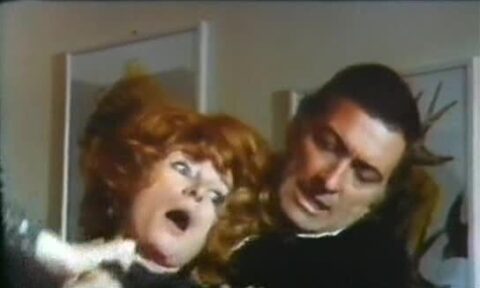
Amadio avoids stylistics and focuses on slowly telling his tale, something he generally succeeds in doing except for when he’s distracted by the idea of teasing the viewer, something which he doesn’t wholly follow through on as we don’t actually see any sex scenes, though there remains a pretty strong and slightly perverse tension in the scenes between Nancy and Gianna; look at the way the former says, “You’re like the mother I never had” before planting a quick smacker on her lips. Jenny Tamburi and Rosalba Neri seem to having a lot of fun with their scenes together, and Neri, who uncannily resembles Emily Blunt at times, truly heats up the screen despite never showing her breasts, though Tamburi seems a tad ill at ease in places, which is understandable since her character remains hard to nail down even at the end. She’s clearly trying her best though. Violence is sparse, though there’s a memorable scene when somebody is stabbed several times by a knife in the stomach, then writhes in pain for nearly a minute before a glass ashtray on the head puts her out of her misery. This is happening to the one character who by this time we like too, if another one we don’t entirely understand. The plot is essentially fine; some minor tweaks for clarity could have been good though, unless the writers wanted certain things to remain a bit vague. They do give us a few good lines i.e. “A corpse is like a guest, they stink after three days”, while Amadio doesn’t fall into the trap of making things static despite rarely taking us out of the house except for a very brief trip back to Rome and a few wanders around the garden, largely because his rooms are very spacious and diverse in appearance; if you don’t like the interior design of one room, there’s a good chance you will like the look of the next. One room has a huge painting of a car take up one wall. There’s a lot of colour coding going on, right from the main lounge which is what we see first, white-dominated with certain objects being red and yellow.
Pregadio’s music score is certainly dominated by that theme, but there are others, notably a melancholy guitar-led cue heard twice and two groovy source cues; at times what we hear seems too light for the movie though. Morricone would have given us some really dark material too. Tranquili doesn’t quite have the magnetism for his lothario character whom we see driving away with yet another woman at one point, but Zora Gheorgieva makes the most of her limited screen time as the unpleasant Dorothy. Is that prime giallo babe Barbara Bouchet dancing at a party? It’s possible to be let down when we realise that we aren’t supposed to like anybody in this film with one exception and that said person is certainly not a hero or a heroine; many tend to need someone to get behind. But, with this knowledge now in mind, it should be easy to get some real entertainment value out of watching these schemers circle around each other. After all, don’t most of us love Bay Of Blood? While I personally would have dispensed with one or two montages, Smile Without Death does quite well by, despite its sleazy aspects, trying hard to restrain itself and focusing on telling a well constructed story. And yes, for the first time in a while, we see a bottle of J & B whisky – well, I think it is, the shelf it’s on is quite far away.
SPECIAL FEATURES
Brand new 2K restoration from the original camera negative
Smile Before Death has a line running down the side of the screen on a few occasions, which is no doubt due to print damage. Otherwise this restoration looks very fine indeed, the vibrant colours often threatening to burst off the screen. Grain is evenly distributed and blacks exhibit no crush.
Original lossless mono Italian and English soundtracks
As usual I watched the English language version in full and bits of the Italian. The actors all seem to be speaking English and the dubbing work is actually pretty good, though of course the Italian sounds more authentic. Funny how the English dub has Nancy say she only saw her mother “eight or nine times” but the subtitles have her say “a dozen”.
Brand new audio commentary by authors and critics Troy Howarth and Nathaniel Thompson
Apparently these two have collaborated on other commentary tracks before, though this is the first one I’ve heard myself, though I’ve listened to Howarth on his own a few times; he has a nice easy going yet also enthusiastic manner though relies a lot on potted biographies which are my personal talk track. One can perhaps not blame him though as many of these films probably have little background information available so he needs to fill out his tracks, and here he keeps them very short. He also tends to lead here, despite some nice conversations the two have on giallo soundtracks and endings. He mentions what is giallo shorthand for corrupt rich and that many of these films are essentially about incest though the filmmakers got around this due to it being “step” relatives. Thompson’s interjections can be very fast and therefore not always discernable. Nice to see I wasn’t the only viewer to think of Blunt though. Overall a good track even though not much is learnt about the film itself.
Smile of the Hyena, a brand new video interview with Stefano Amadio, film journalist and son of director Silvio Amadio [23 mins]
Sadly there weren’t any subtitles on this Italian language interview on my review copy.
Never-before-seen extended nude scenes, not used in the final film [3 mins]
Here we get to see an extended nude photograph sequence and, even better, a longer lesbian tussle with Neri’s breasts on full show. There’s no sound available, but I still want to see this footage in the film damn it! The Austrian Cineploit release has an interview with Tamburi but none of the special features on the Arrow.
Image gallery
DISC TWO
THE WEAPON, THE HOUR, THE MOTIVE
AKA L’ARMA, ‘O ORA, IL MOVENTE
RUNNING TIME: 105 mins
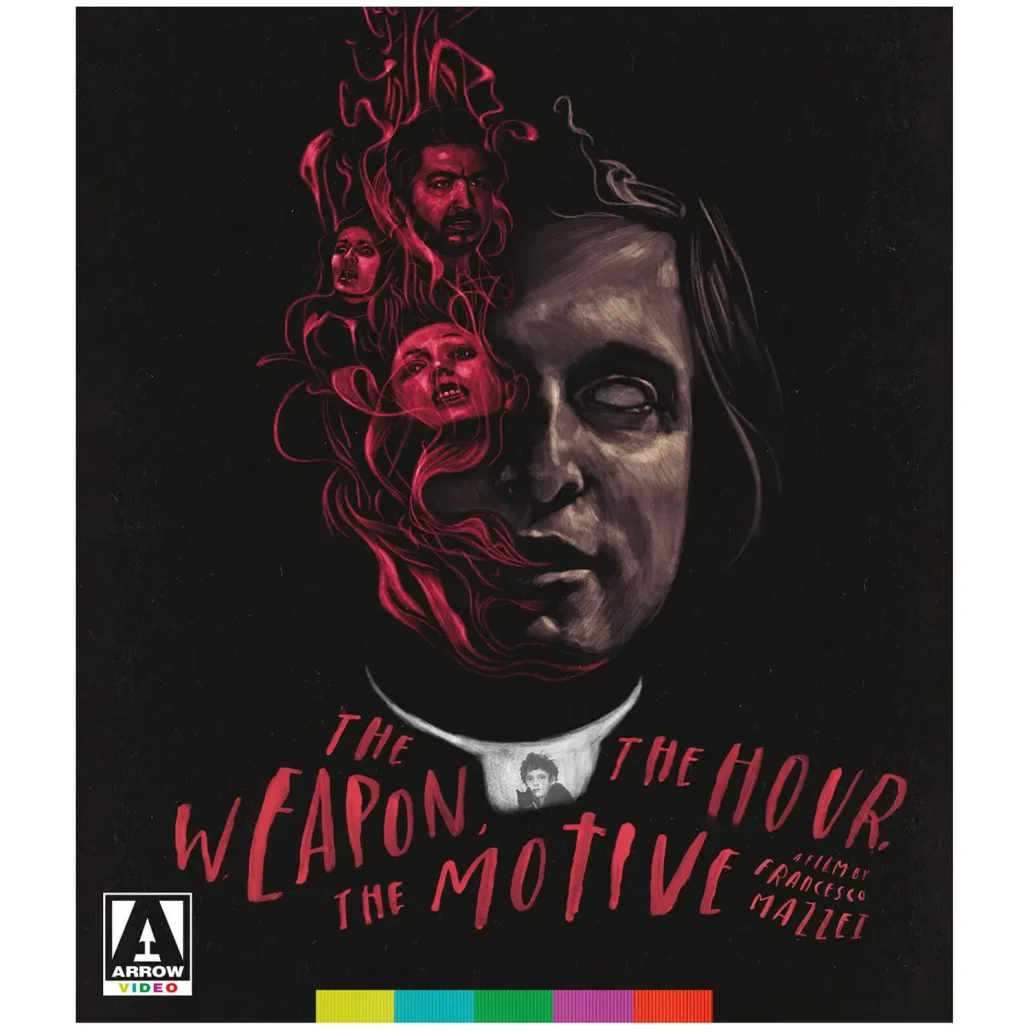
Don Giorgio is a priest who teaches in a convent where self-flagellating for sins is commonplace and a young orphan named Ferruccio sees virtually all from various spy holes in the huge attic. Giorgio is having affairs with two different women; Orchidea – who looks after Ferruccio and whose husband Ned is the local engineer, and Giulia Pisani. However, tormented by the wrongness of what he’s doing, he decides to break off relations with both of them, but soon after is murdered in the church with his throat and stomach cut. Ferruccio may have witnessed Giorgio’s death, but he’s often drugged up because of an illness. Still, there are several obvious suspects for Inspector Franco Boito to chase up, but when he begins a relationship with Orchidea, what’s the hope for a fair inspection of who the killer could be?….

Never quite rising to the very high level you think it’s going to but full of interesting ingredients, The Weapon, The Hour, The Motive [ a line said by Inspector Boito during the movie] is much more the sort of film that will come to mind for most people outside of genre experts, though instead of ’70s cosmopolitan chic we have excellent use of the setting of a convent, and this convent is particularly unsettling; while it does have nuns who don’t just take baths fully clothed with their nipples showing through but, in the scene most who’ve seen this will probably remember it for, flagellate themselves to a frenzy which seems just a tad bit sexual [I’m sure writer/director Francesco Mazzei and co-writers Marion Bianchi, Bruno di Geronimo and Vinicio Marinucci didn’t intend this whatsover!!!], there’s also a hallway full of stuffed animals, an underground room inhabited by skeletons and an attic that can seemingly lead anywhere so that Ferruccio can see almost everything that’s going on in the place, all shot to their best advantage, not to mention a very odd overgrown countryside hotel with only one dining room where the moody-looking owner sits and watches her dining guests, plus a virtual maze of corridors and doors. Not much of this is to do with the plot, but it’s a decent one, incorporating tried and tested ingredients as it presents several suspects and then gradually narrows it down, though it lacks a good climax; not every giallo has to end on a dramatic confrontation scene where the killer explains his or her often ludicrous motive before dying in a spectacular way, but seeing as this entry is rather low on action and only gives us one onscreen murder – a quick but sudden throat and stomach slashing – some climactic thrills would have been welcome. this movie employs that film’s trick with keys in the narrative.
Our first shot is of Ferruccio watching out of a window and, as I watched the film, the thought occurred to me several times that one could have made a good film centering around the little boy a la The Window. Ferrucio sees the nuns playing tennis beside a road [not very safe that] and a man waiting beside a car. This is Girogio waiting for one of his two lovers, both of whom are married, and at first he seems like he might be the main character; after all gialli often feature heroes who “put it about” and who have no shame on doing so, though maybe having a priest behaving in such a manner wouldn’t have been liked by the Italian censors. A few gialli actually feature priests as killers, including one of the best five gialli ever made and released the same year as this [I don’t want to give the film’s identity away just in case you haven’t yet seen it but it’s also available from Arrow in a terrific Blu-ray release], but they are – at least in the ones that I’ve seen – condemned by the narrative. Giorgio may get killed soon, but the script doesn’t really criticise his actions; instead, it depicts him as being tormented and needing to return to a celibate church life, though admittedly the dull performance of Alcira Harris in the role doesn’t portray this very well. Giorgio knocks over some flowers belonging to Anselmo Barsetti the Sacristen; we get the impression that he pisses off this old guy often, and we chuckle even though it’s an example of very easy laughs plus providing us with another suspect when Giorgio gets killed. Giorgio and Orchidea are followed by a couple who probably have blackmail in mind; well, in a giallo hardly anybody has an illicit affair without someone following them.
The morning after in the car Giorgio dumps Orchidea, but finds it harder to do the same to Guilia who’s able to use her sexual powers of persuasion to sleep with him one more time, but afterwards he still breaks it off, and then whips himself on the steps of the altar in the church as penance. Tehre’s some stuff with tarot cards which just seems to be put in there to pad out the running time which is as a result over an hour and a half and therefore not really necessary, but it’s not that long before Giorgio is found dead, though after a pretty good false scare when Ferruccio, after walking down the stuffed animal corridor while the camera and the sound effects go a bit crazy, goes into a cupboard and doesn’t notice an arm dangling down which proves to be fake, before being surprised by Barsetti. When Inspector Boito turns up, he’s annoyed that Giorgio’s body has been moved and insists that Father de Rossi, covering for Giorgio, not just plays the corpse but stays lying on the floor while he talks to others. Both of the main women had motives, as did their husbands. Ferruccio may know more than he’s letting on even though he’s often drugged, especially since one of his marbles is found beside the body, and Sister Garquinia lurks around seeming like she wants to tell some secrets, while Barsetti was once in prison for murder. The murder weapon was his, but why does it have wax on it? Boito spends more time hanging out with Orchidea then investigating the mystery, so it’s little surprise that another main character is soon killed while picking up a certain letter – oh, and who is it who’s sending these both threatening and moralistic poison pen letters? We’re always intrigued and are even in suspense despite the lack of many really tense sequences. And we’re a bit disturbed by thinking that a child, who likes to photograph people then put cut outs of their heads onto existing pictures could even be the killer. His relationship with Orchidea proves to be very important.
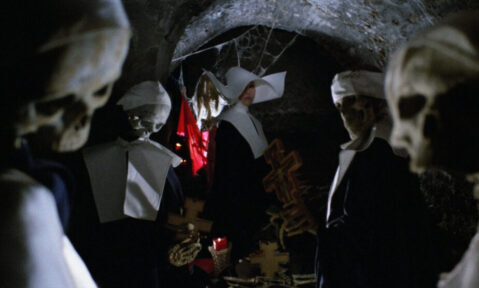
Our cop hero Boito is initially grumpy but soon softened by love – and love it certainly seems to be despite the usual giallo sleeping with someone very quickly, while we don’t feel bad about Orchidea being a serial cheater because of a scene where hubby has sex with her even though she doesn’t want it, an easy way to get sympathy but one that usually works until after the film when one can reflect on one has been slightly crassly manipulated – though of course if you’re overly concerned with matters of a moral nature then you probably shouldn’t be watching these films anyway. Boito and his rather slow [but not Nigel Bruce Dr. Watson slow] aide Morriconi [what a name!] are a great pairing. Boito often seems to treat Morriconi with the disdain that Morriconi may really deserve, but he does it in a fairly subtle way, and eventually he does let him bash down a door in a nice highlight. At one point one Boito chases Morriconi and they end up fighting in a totally darkened room. Renzo Montagnani has a really nice, natural, down to earth presence. He really sells it when his character suspects his newly found girlfriend. Bedy Moratti is a bit too distant as said person, but there are some nice quirky touches throughout in the scenes where they are together. “I know I have a son in Haiti” barks out the owner when the couple spend a night at this peculiar hotel which is later found to be closing down because the owners died. Such things don’t matter to the story, but increase the disquieting atmosphere that most of us fans of these things like. In fact a hell of a lot of effort has made made to put in odd details, which makes up the lack of exciting set pieces, notably a finale where the killer is found dead [this shouldn’t be ruining much] – though there’s the rather memorable sight of lots and lots of marbles disrupting a church service, and there’s one very tense sequence not long before where one character is menacing another then saves said person, while we’re not sure of either of two character’s place in the overall design.
Though never reaching the excesses of the genre’s more flamboyant names, Mazzie seems happy to let the camera of Giovanni Carlo to explore, and in particular to circle around two lunch gatherings, taking in people as they utter some words and then whipping back if somebody already shown says something. The chat about 50% decrease in members of the order was probably true, people deserting the Church in droves because it stood in contradiction to much of modern life. While set design understandably leans towards the simple and even slightly Gothic in accordance with the setting and the vibe, though actually is looks like real locations were generally used and maybe dressed up a little. The soundtrack by Francesco de Masi is very restrained, especially in comparison with the insistent use of music in Smile Before Death, though this movie uses that film’s trick with keys . While there are a couple of typically cool lounge-esque pieces, dramatic scoring is mostly absent apart from some trippy aural bits. The Weapon, The Hour, The Motive is restrained in a fair few other ways too, notably never ramping things up to a great degree, yet remaining intriguing and with some very memorable scenes, images and character relationships.
Brand new 2K restorations from the original camera negative
A very fine transfer of a film which is deliberately far less visually colourful than usual for the genre. The many fairly dark sequences all come out very well, with plenty of detail and deep blacks.
Original lossless mono Italian soundtrack
Unfortunately the English dub for this is lost, though one was obviously done as Arrow were able to locate the English language front and end title sequences.
Brand new audio commentary by author and critic Alexandra Heller-Nicholas
As expected, Heller-Nicholas’s track is much more scholarly than the one from Howarth and Thompson, and it’s easy to get irritated by it hardly ever being scene specific; you just want her to say something insightful about certain moments, especially as their are lots of gaps and she says that this in a film she really likes, even though she calls it Who Killed The Horny Priest? which might be a better titlem4m. Nonetheless she’s still usually interesting and definitely not dry [which scholarly commentators can often be] as she discusses how the film, which was made during a period of major atrocities from both the left and the right, deals with major cultural shifts that were going on in Italy at the moment, shifts that the Church struggled to keep up with. Frequent quoting from other sources gives us a prefect description of the giallo – “a cinema of ambivalence”.
A Man in Giallo, a brand new video interview with actor Salvatore Puntillo [13 mins]
Puntillo also played a similar but smaller role in Deep Red, and seems very happy to talk about appearing in the two films and some of the folk he worked with. He remembers that both experiences were good for him, that Montagnani’s son was ill during filming, and that producer and co-writer Mario Bianchi expanded his part because they got on so well.
Front and end titles for the lost English-language dub [3 mins]
Image gallery
DISC THREE
THE KILLER RESERVED NINE SEATS [1974]
AKA L’ASSASSINO HA RISERVO NOVE POLTRONE
RUNNING TIM: 104 mins

Nine people at a party, including rich aristocrat Patrick Davenant, are invited to Davenant’s family home which contains a theatre. Davenant narrowly misses being killed by a falling beam on the stage, though the rope that was cut is replaced by an un-severed one while everyone’s attention is diverted. Most of the guests have a motif to kill Davenant, though then again some seem to have reasons to want to kill each other too. When one of them is killed on stage, it’s not the first corpse to be found. The culprit must either be one of them or a rather mysterious butler seeing as the doors are locked, and no one can ring for help because somebody’s cut the phone wires….
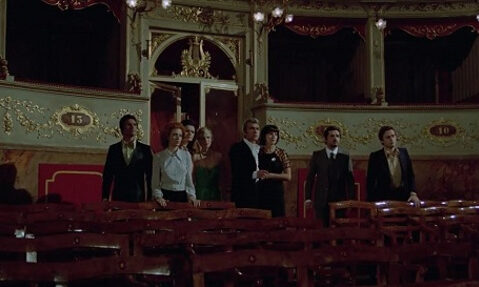
In 1974, colourful producer Harry Allan Towers made the second of his three screen adaptations of Agatha Christie’s And Then There Were None aka Ten Little ******* or Indians. As usual with movie versions it replaced Christie’s grim ending with a happier one, but enough of the superbly constructed murder mystery still came through. And the same year in Italy, producer Dario Rossini brought out The Killed Has Reserved Nine Seats, which doesn’t credit Christie but which is clearly inspired by her tale. In fact Christie’s work inspired a lot of gialli, though whether she’d have been happy about this I doubt. This one, which may in turn have influenced Stagefright, melds Christie’s premise with ’60s Italo Gothic and typical giallo sleaze to create a fabulously entertaining ride which even just about gets away with some supernatural elements which aren’t all explained, including a “huh”? finish. It even has some good lines which work even with English dubbing. “Do you know what I love about you people? You’re so civil to each other while you tear each other to pieces” says one of our protagonists at one point and, while it’s only around half way when the murders begin, we’re having so much fun watching these scheming lovers and ex-lovers that we’re certainly not bored, while director Giuseppe Bennati then proves himself highly adept at creating tension and even fear from archetypal situations like people wondering about when they shouldn’t, the killer appearing behind someone who has no idea, and people seeing the killer’s shadow moving towards them. On the other hand too many of the murders only show us the aftermath, and it’s hard to accept characters who are terrified or shocked one minute, then act sexy or clown around in the killer’s outfit the next – let alone somebody who has trouble remembering his birthday and what happened on the same date many years before!
So some cars are driving on a road at night and the footage where we don’t see the performers is probably stock footage, and shaky stock footage too, but it’s cool that each actor’s first appearance happens at the same time as his or her name comes up on the credits, as are the way these characters are introduced in a series of glances nice and not so nice, touches, hands holding, but with no dialogue than we can actually hear. This is nice stuff, good introductory material. First to be welcomed at their destination by the caretaker – before he leaves – are the place’s owner Patrick, who hasn’t been there in a very long time, his younger fiancee Kim and her ex-boyfriend Russell. She left the clearly working class Russell for Patrick in a bit of slight class commentary, but they obviously still fancy each other greatly. Patrick’s ex Vivian, whom he decided not to marry because she has an inglorious past, also arrives, and she now has a husband named Albert. Then there’s his sister Rebecca and her girlfriend Doris; Doris is lusted after by Russell [“one day I’m going to screw you Doris”], while Rebecca seems generally predatory. Patrick’s daughter Lynn and her boyfriend Duncan are also present, as is a strange butler-type character who never buttles and says things like “I spent a whole night here on the stage, one hundred years ago” which oddly don’t draw much comment from the others. They bicker and snipe at each other, often en masse, and have illicit encounters while speaking exchanges like, “why can’t you forget him”? “why don’t you make me forget him”? The women all seem very keen to get topless, including a totally and utterly gratuitous scene where Lynn, after seeing something nasty then popping some pills, dances in her room while her robe keeps revealing her breasts and eventually falls off. I have no shame in admitting how I enjoyed this, even though such stuff isn’t done much today yet I hate to admit that – yes – it’s all a bit sexist since not one single guy takes his top off. I mean I’m totally straight, but come on!
Doris sees a man’s face amidst some wax dummies which is suddenly replaced by a real wax dummy, something that will later be prove to be a not isolated supernatural event, with voices screaming and quoting poetry on stage, and the discovery of a scroll seeming to predict what will happen to the characters [an idea not exploited enough], but there’s nothing supernatural about Patrick almost being killed by a beam which was conveniently hanging on a rope for somebody to cut. Why another character then decides to perform Juliet’s suicide from Romeo and Juliet on the same stage I don’t know, but then this film is full of people doing silly things in what is clearly, despite the absence of actual humour, something of a lark, so it’s probably pointless me wondering or complaining about things like that. The acting gets rather too real and upon investigation the person is seen to have, in addition to the fake one in her stomach, a real dagger in her back, a notion repeated, with variation, to great effect like Stagefright. Doris sees someone fleeing, and gives chase, but loses him or her. Several people may have wanted to murder this person, but it’s also possible to lose track of all the reasons that one of these people may have for killing another. Then again, as somebody says, “We’ve all hated each other so much and for so long that the reasons behind it have been forgotten”. Then Patrick remembers that it’s his birthday, and that on the same day a hundred years ago some people partied in the same house and were found dead the next morning. This is followed by another body being discovered. Initial suspicion understandably focuses on the oddball in the Nehru suit, but he’s hard to find because he only seems to appear at certain moments.

As the characters enter the house, the camera pans all over the interiors so we get a sense of the place which seems to ooze a strong feeling of past decadence, and thereafter Bennati makes the most of his awe-inspiring medieval theatre and his long corridors which characters frequently wonder down and his dark rooms which characters frequently wonder into. Yes, one can cry out “stupid” at their actions, but these set pieces are so good that we can just about forgive the idiocy of these people who may have all stayed alive if they’d only stuck together. Bennati is probably even less stylish than Mazzie, but he shows a sure hand in doing this kind of thing, and does let the camera of Guiseppe Aquari virtually lose itself in a group of curtains, while there’s also some good use of mirrors, done so that it looks like we’re more seeing split screen. Perhaps his best managed scene is when somebody is outside her room which has the killer inside. When eventually let in, she fails to see the killer sitting there in plain sight, passing right by him [or her]. He’s a bit unnerving, this robed maniac, with his bearded stage mask [and of course leather gloves, though this is the first time we’ve seen them in this set] and his knack for being close by because he’s so quiet. The revelation of his or her identity is actually fairly simple and even disappointing, but then things conclude in a positively fantastical fashion. Obviously I can’t go into detail, but the final act ties things up up to a point. In fact the basic overall plot is quite well put together by screenwriters Bennati, Biagio Projetti and Paolo Levi, as long as we’re prepared to leave the real world [something which I reckon a few viewers may have trouble doing so], though some stuff is left vague.
These films tend to be full of familiar faces, and this one is no slouch, though what I couldn’t get my head around was how much Chris Avram [Patrick] looked like Rossano Brazzi, I actually wondered if it was him for a while! Eva Czemerys as Rebecca probably fares best acting-wise, but the ensemble cast works very well together even if there aren’t any outstanding performances. Violence-wise we get garrotings and stabbings, though sometimes only after the event, and a crushing by a strange sliding door contraption crushing, which are all quite tame. However, there’s one genuinely nasty [despite a terrible dummy hand] killing where a woman is stabbed repeatedly in the genitals [okay the impact isn’t seen but we still cringe] before having a hand nailed to a pillar. There’s no real reason for the killer to go all sexually sadistic on this person and, seeing as the victim is one of the lesbian characters, it’s possible to conclude that an anti-gay point is being made here, though I reckon that it comes from an attempt at very dark humour rather than genuine hatred, in a film which is on the edge of parody anyway. Also, it’s notable that the lesbian relationship between Rebecca and Doris is not at all portrayed in a bad way; in fact it’s probably one of the healthier relationships in a film which even includes incest, though in terms of sex all we get is tease; lots of boobs and one man/woman love scene which cuts away very early on. Carlo Savina’s music score, written for small but unusual ensemble, has a typically catchy and light main theme supported by eerie, simple but effective chord-based passages and, as is usually the case for this genre, a couple of groovy dance numbers. That creepy use of a violin from Lisa And The Devil returns. I had a real ball with The Killer Reserved Nine Seats. It’s a bit of a hoot if you have some idea of what to expect. And maybe Christie wouldn’t have been too appalled.
SPECIAL FEATURES
2K restoration from the original camera negative
This is probably a port from the German Camera Obscura Blu-ray. It has more detail than the other two films though sometimes the colours fluctuate ever so slightly. Skin tone looks the best though.
Original lossless mono Italian and English soundtracks
The English dub is solid; not as good as the one for Smile For Death but certainly not bad. The cast members seem to be mostly, though not all, speaking English too, and comparing a few bits to the English subtitles reveals it to be fairly faithful. However, the English language version was shorn of three minutes of dialogue, so for four brief scenes it goes into Italian with English subtitles. The cutting of this footage doesn’t seem to have much point to it, though there are versions of this film which remove a lot more, in particular a 90-minute edit. Sure, the viewer would get to the thrills more, but this would change the movie’s intent; it’s clearly as much about decadent rich folk being nasty to each other as it is a slasher mystery.
Brand new audio commentary by author and critic Kat Ellinger
Ellinger provides a track which occupies a sort of midway point between the previous two in this set. She typically comes across as a looser Heller-Nicholas, but every now and again gets scene specific. Certain facts like there being so much sex in Italian films of the time because there wasn’t any actual pornography until the late ’70s and the definition of giallo being changeable are interesting; while most of us debate whether certain films are gialli or not, Italians class all thrillers as gialli. Notable observations include giallo “final girls” generally not being the virginal types often seen in slashers, and Ellinger can’t understand why a theatre hasn’t been used more for horror while pointing out that people in this film are generally playing roles. Some background information is taken from the two featurettes listed below; what interested me most is that Biagio Projetti planned to do a film with Mario Bava but it never happened. A nice, balanced track full of Ellinger’s usual enthusiasm.
Hanging with Howard, a video interview with actor Howard Ross [8 mins]
This and the next feature are ported over from the Camera Obscura Blu-ray which had a different commentary track to the one above. Ross reflects with distinct happiness on his time making this film. Even if he admits that he can’t recall any anecdotes, it’s fun hearing him say that Rosanna Schiaffino and Chris Avram were always moaning, that Lucretia Love was the only person of the crew who seemed happy, and that Schiaffino ” had the best backside in the world”.
Writing with Biagio, a video interview with screenwriter Biagio Proietti [28 mins]
Biagio discusses his early career before reminiscing about working on The Killer Has Reserved Nine Seats. He made gialli for TV and liked being constrained in terms of sex and violence, details his working process with his co-writers, and tells us that the film was a hit in Italy even neither he nor the producers saw any mooney.
Italian theatrical trailer [in Italian and English] [6 mins]
LIMITED EDITION CONTENTS
High Definition Blu-ray (1080p) presentations of each film
English subtitles for the Italian soundtracks
Optional English subtitles for the deaf and hard of hearing for the English soundtracks
Rigid box packaging with original poster artwork in a windowed Giallo Essentials Collection slipcover
Reversible sleeves for each film featuring original and newly commissioned artwork by Adam Rabalais, Peter Strain and Haunt Love
Genre fans should jump at the chance to get these three relatively obscure gialli, all of which are good but which get better with each film, while each commentary makes for an interesting comparison. Highly Recommended!





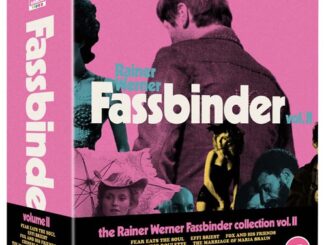


Be the first to comment